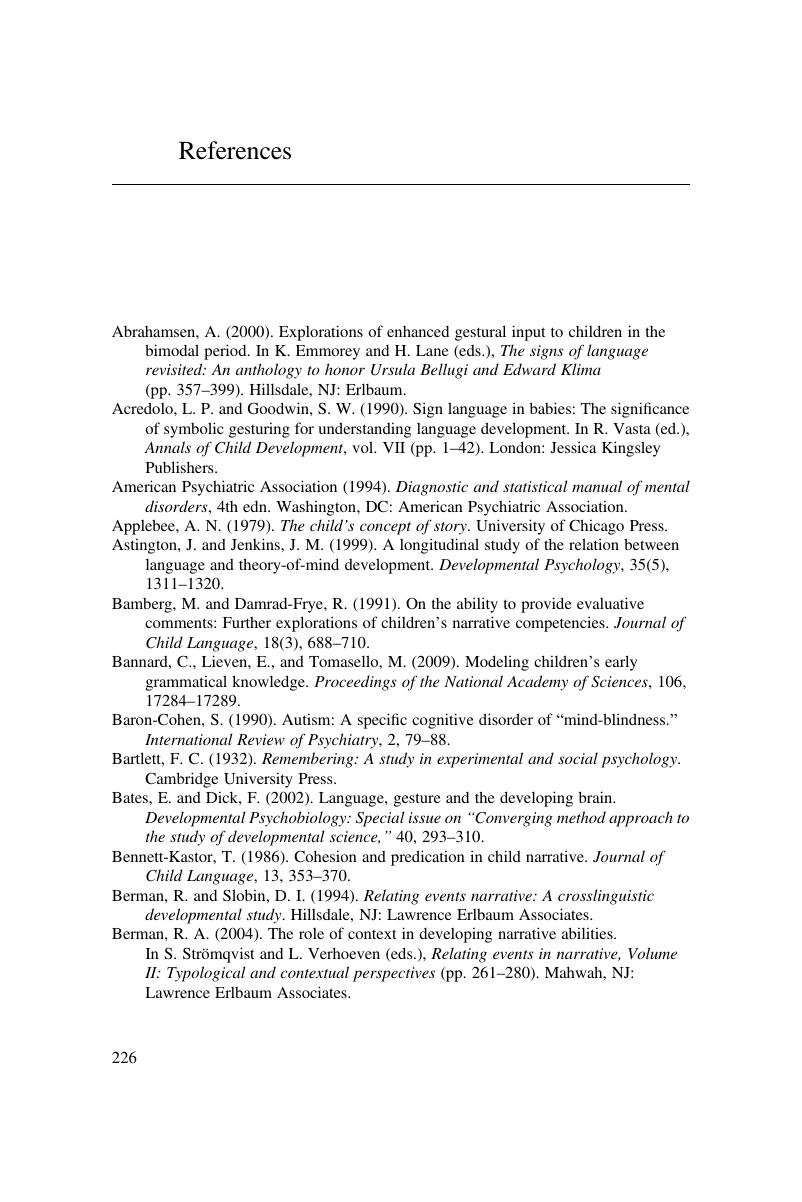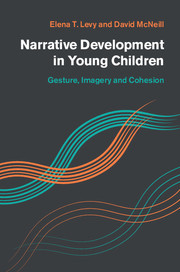Book contents
- Narrative Development in Young Children
- Narrative Development in Young Children
- Copyright page
- Dedication
- Contents
- Figures
- Tables
- Preface
- Book part
- 1 Toward an embodied account of narrative development
- Part I Narratives as symbol formation
- Part II Social sources of cohesion
- Part III Gestures, cohesion, and narrative development
- Appendix 1 Method of transcription of Ella's speech and gestures
- Appendix 2 Ella and father's description of Rosie and Jim episodes
- References
- Index
- References
References
Published online by Cambridge University Press: 05 June 2015
- Narrative Development in Young Children
- Narrative Development in Young Children
- Copyright page
- Dedication
- Contents
- Figures
- Tables
- Preface
- Book part
- 1 Toward an embodied account of narrative development
- Part I Narratives as symbol formation
- Part II Social sources of cohesion
- Part III Gestures, cohesion, and narrative development
- Appendix 1 Method of transcription of Ella's speech and gestures
- Appendix 2 Ella and father's description of Rosie and Jim episodes
- References
- Index
- References
Summary

- Type
- Chapter
- Information
- Narrative Development in Young ChildrenGesture, Imagery, and Cohesion, pp. 226 - 234Publisher: Cambridge University PressPrint publication year: 2015

